Product Information
Giffard Piment d'Espelette

Piment d'Espelette is a rare, hand-harvested red chile pepper grown only in the Basque region of France. Nestled in the south of France, Piment d'Espelette cultivation has flourished in a protected natural environment since the 17th century. Our chile liqueur is made from the maceration of whole, fresh Espelette peppers with a hint of aged rhum agricole from Martinique. This results in a strong aromatic intensity with warm and spicy notes. Piment d'Espelette is the only French spice with APO / DPO recognition, limited to ten villages located in southeast France.
| Volume | 750 mL | ABV: 40% |
| Appearance | Bright straw yellow, intense shine, copper gold reflections |
| Aroma | Herbaceous yet gentle and warm, fresh chili-pepper, notes of freshly cut grass |
| Tasting Notes | Assertive chilis, warm mid-palate with hints of vanilla and sweet spices, rising intensity. Gourmet cocoa finish, persistent spiciness, with a slightly caramelized essence. |
Complexity & Enticing Aromas
Equipped with its complexity and enticing aromas, Piment d'Espelette Premium Liqueur can be used as the main spirit when building cocktails. It is highly versatile and is a perfect companion to a wide range of spirits.
Thanks to our well-rounded chile liqueur, the degree of spiciness in the final drink can be perfectly adjusted depending on the quantity of product used.
- No preservative
- No added color
- < 200g/L sugar (lowest rate of the Premium range)
About Piment d'Espelette

Get to Know the People
Vincent Darritchon, producer of Espelette peppers for over 25 years, fell in love with this precious botanical fruit in early childhood.
Since 1996, he has cultivated and harvested Espelette peppers himself along with his small, close-knit team.
His passion to continually advance regenerative, ecological farming practices, gives him an outstanding reputation in the Basque Country.
Vincent's multiple appearances on Youtube, local TV, and documentaries inspire fellow farmers to experience and share the joy, bounty, and community in growing Piment d'Espelette.


"My story with Espelette pepper began in my childhood. As a kid, I observed the grocer of my village, Ustaritz. His precise and meticulous gestures made me think that the red flakes, flowing from the jar onto a sheet of glossy paper, must be precious."

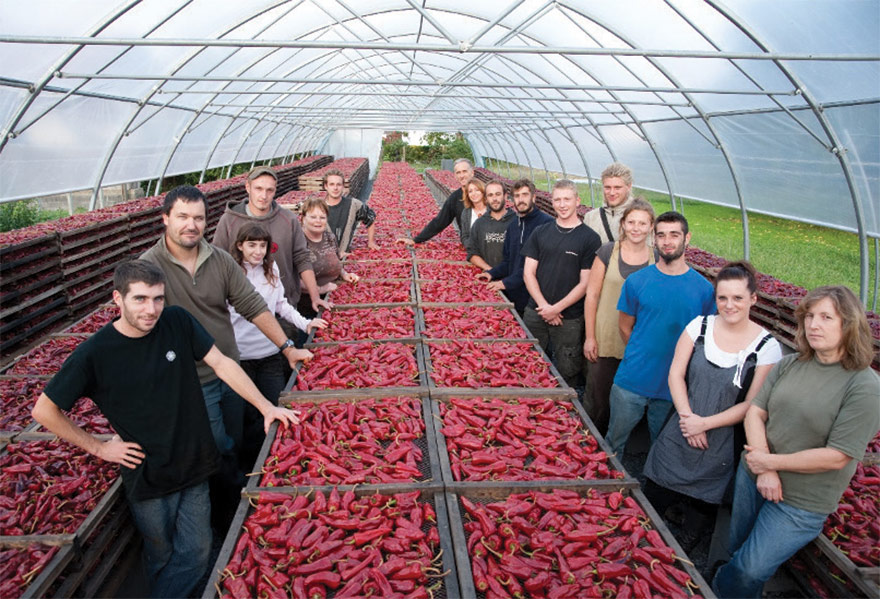
Vincent Darritchon's farm is located in Ustaritz - 10 minutes from Espelette - his home village since the late 90s.

His team grows and harvests approximately 5.5 tons of Espelette peppers per year, of which a large part is ground up and becomes his famous Espelette pepper powder.
Vincent Darritchon is also the official supplier of Espelette peppers for some of the most prestigious tables and delis in the gastronomy world, such as Plaza Athénée and Fauchon Paris.
A Bit of History
The Espelette Pepper, known as "Ezpeletako Biperra" in Basque language, flourishes in a protected and natural environment since the 17th century. Located close to the Atlantic Ocean and surrounded by hills, its microclimate is celebrated for uniquely mild summer temperatures, significant rainfalls, and "Haize Hegoa" (Basque for southern winds). Similar to a subtropical atmosphere, the bio-climate is conducive to the harmonious growth and development of Piment d'Espelette.

The first traces of cultivation of chile peppers can be found in Mexico around 6,000 BC. The farming of various Capsicum Annuum (chiles) spread across the globe, as a result of exploration and an increase in spice trade routes. The presence of chiles around the town of Espelette can be traced to 1650. It is widely accepted that Piment d'Espelette was cultivated by the local population as a substitute to black pepper, which was very expensive at that time.
AOP Designation
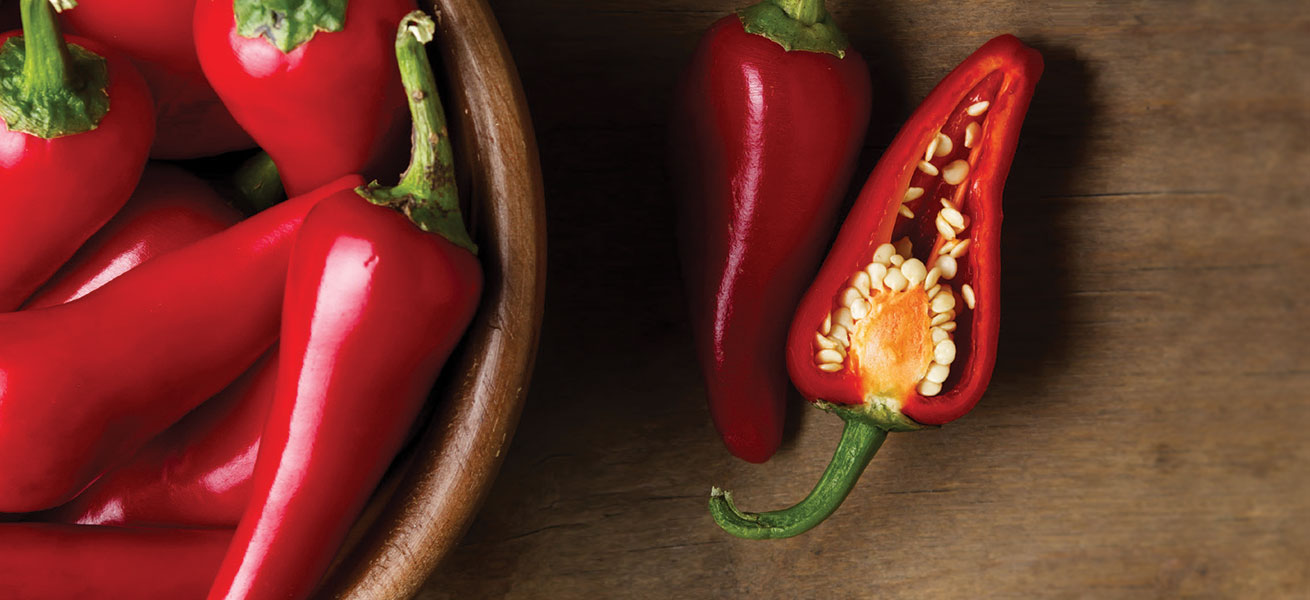
Piment d'Espelette is the only French spice with AOP recognition
Protecting production in only 10 small municipalities around the town of Espelette, Piment d'Espelette is the only French spice with AOP recognition.
AOP recognition was granted in 2002 after local farmers pushed for protection of their unique, regional chile pepper.
The AOP recognizes red, conical fruit from 7 cm to 14 cm (without the stalk) and not green coloration.
Also named "the red gold from Basque country"
Only three forms are allowed to be called "Piment d'Espelette AOP"

- Fresh, whole chiles (flash freezing is acceptable)
- Corded chiles (traditionally strung up and laid out to dry)
- Powdered chiles (primarily for cooking)
Scoville Scale

Measurement of the Intensity of Chile Peppers

10 - Explosive
Habanero Pepper - 100 000 + SHU
9 - Volcanic
Whole Cayenne Pepper, Tabasco - 50 000 to 100 000 SHU
8 - Torrid
Bird's Eye Chile - 30 000 to 50 000 SHU
7 - Burning
Chile de Árbol - 30 000 to 50 000 SHU
6 - Fiery
Cayenne Pepper - 5000 to 15 000 SHU
5 - Strong
Chipotle Pepper - 2500 to 5000 SHU
4 - Hot
Espelette Pepper - 1500 to 2500 SHU
3 - Spicy
Ancho Chile - 1000 to 1500 SHU
2 - Warm
Niora - 500 to 1000 SHU
1 - Mild
Mild Paprika - 100 to 500 SHU
0 - Neutral
Bell Pepper - 0 to 100 SHU
*SHU = Scoville Heat Unit
Maceration Process
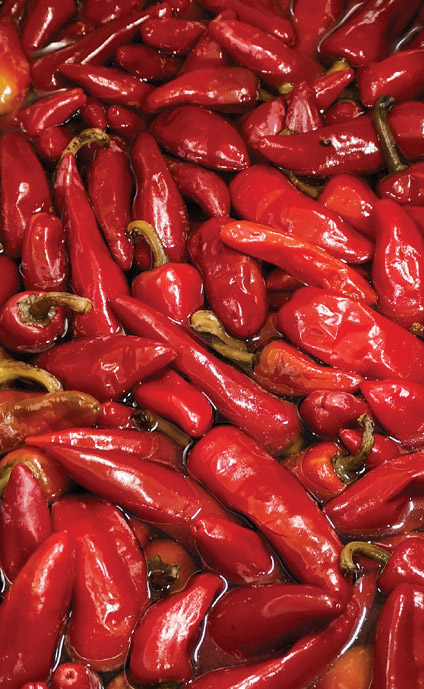
Whole Espelette peppers are rested in neutral spirit to extract their juice and herbaceous aroma.
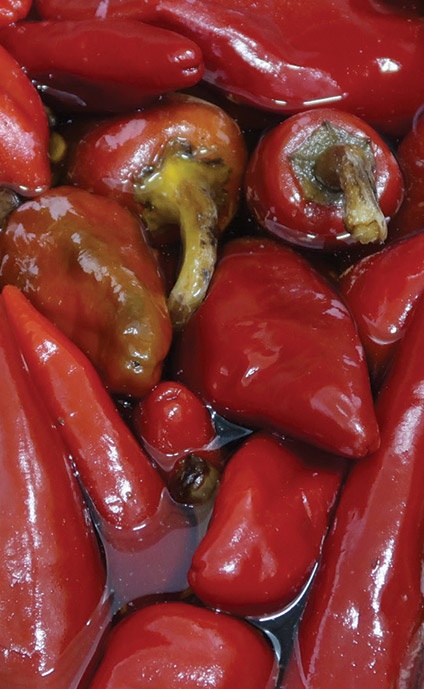
Green stalks are included in the maceration to add vegetal complexity.
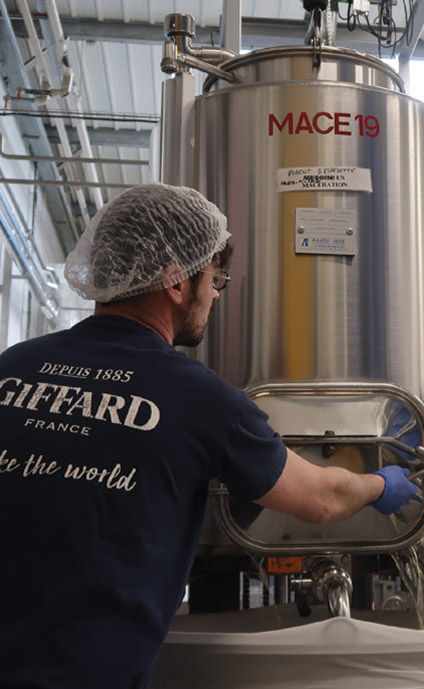
A slow maceration is necessary, with the chiles staying submerged in alcohol for four weeks.
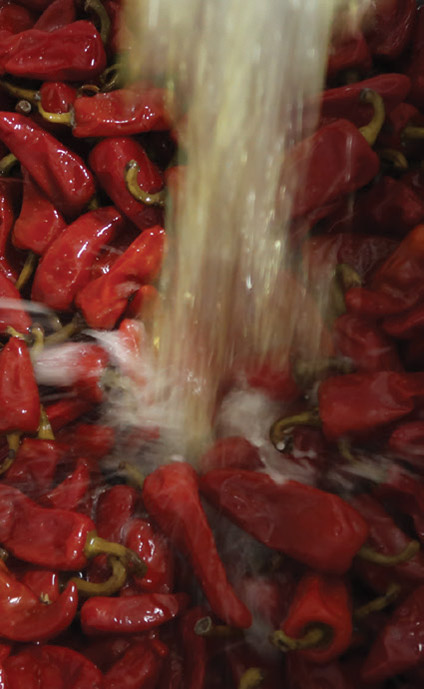
Aged rhum agricole from Martinique is added to the final blend in small amounts to add depth, along with warm vanilla, spice, and fruit notes.
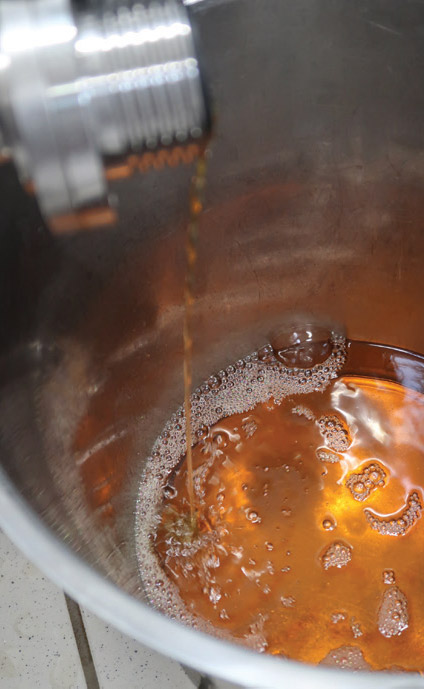
Resting the liqueur for one month after bottling allows it to develop its distinctive bouquet and roundness.
Why Use Our Liqueur in Your Cocktail?
| Classic Ways to Add Spiciness | The Drawback |
|---|---|
| Tabasco |
Strongly linked to Bloody Mary
Strong savory / vinegar / salty notes |
| Pepper Powder |
Difficult to measure out
Difficult to mix |
| Hot Chile Oil / Chile Paste | Difficult to mix |
|
Bitters
(i.e. Firewater Tincture from Scrappy's Bitters) |
Only to bring shades or top notes, not the main flavor nor character |
| Muddling Fresh Chile Peppers |
Fresh chiles vary greatly in heat / intensity
Handling peppers = spicy residue on your hands (and eyes!) Fresh chile peppers go bad quickly |
Giffard Piment d'Espelette Drink Recipes
Daiquiri d’Espelette
| Ingredients | |
|---|---|
| 1.0 oz. | Giffard Piment d'Espelette |
| 1.0 oz. | Rhum Clément Canne Bleue |
| .50 oz. | Rum-Bar White Overproof |
| .75 oz. | Fresh Lime |
| .25 oz. | Simple Syrup |
| Method |
|---|
| Shake ingredients together and strain over ice |
| Garnish |
|---|
| No garnish necessary |
Piment Daisy
| Ingredients | |
|---|---|
| 1.5 oz. | Agave de Cortés Mezcal |
| 1.0 oz. | Giffard Piment d'Espelette |
| .75 oz. | Fresh Lemon Juice |
| .25 oz. | Agave Syrup |
| Method |
|---|
| Shake ingredients together and strain over ice. |
| Garnish |
|---|
| Lemon wedge |
Espelette Old Fashioned
| Ingredients | |
|---|---|
| 2.0 oz | Rum-Bar Gold |
| .75 oz | Giffard Piment d'Espelette |
| 2 dashes | Mole Bitters |
| Barspoon | Demerara Syrup |
| Method |
|---|
| Stir ingredients together in a rocks glass with ice. |
| Garnish |
|---|
| Orange peel |
| Brandied cherry |
| Equipment |
|---|
| Rocks glass |
Spicy Margarita
| Ingredients | |
|---|---|
| 2.0 oz | Angelisco Tequila Blanco |
| 1.0 oz | Giffard Piment d'Espelette |
| .75 oz | Fresh Lime Juice |
| .25 oz | Simple Syrup |
| Method |
|---|
| Shake ingredients together and strain over ice. |
| Garnish |
|---|
| Salted rim |
| Lime wedge |
For more visit Back Bar Project





